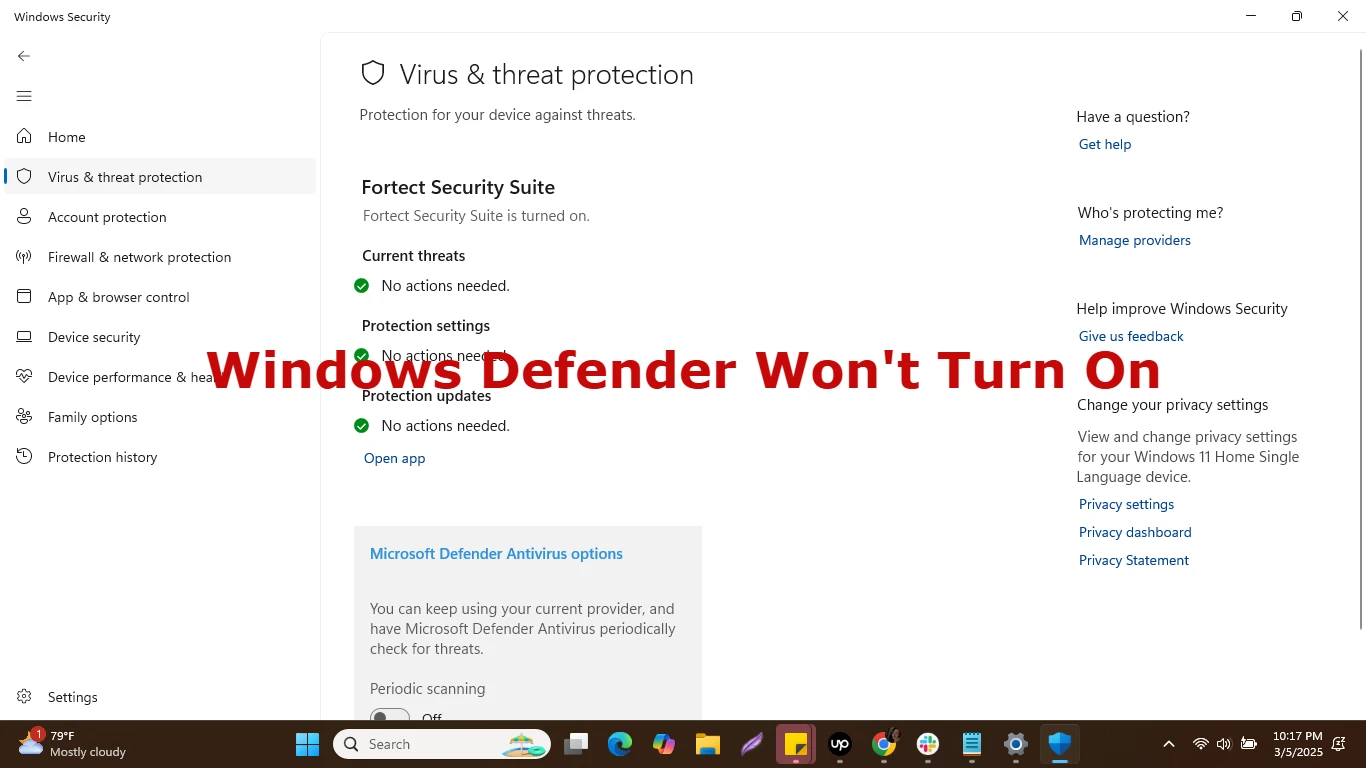Windows Defender is the built-in security solution for Windows users and offers real-time protection against malware and other cyber threats. However, sometimes users come across a problem Windows Defender is not goingWhich makes their system vulnerable. If you are confronted for this problem, this guide helps you to solve and resolve problems.
Reasons why Windows Defender will not be called in?
Various factors can prevent WD from being activated. Here are the most common reasons:
- Third -party software for antivirus – if you have done that Another antivirus installedWD can be switched off automatically.
- Damaged system files – Damaged or missing files in Windows can disrupt the functionality of Defender.
- Group policy restrictions – Certain system policy can prevent the defender from starting.
- Windows Security Services does not work – If essential security services are eliminated, the defender does not work.
- Outdated Windows updates – An outdated or buggy Windows version can prevent the defender from being switched on.
How to repair Windows Defender, not switched on
1. Check on third-antivirus software
Windows Defender is automatically switched off when another security program is installed. To check:
- Open Institutions (Win + I).
- Go to Apps> Installed Apps.
- Search for third -party antivirus software.
- If you are found, you can remove it and restart your PC.
After removing the antivirus, try to switch on Defender again.
2. Start Windows Security Services again
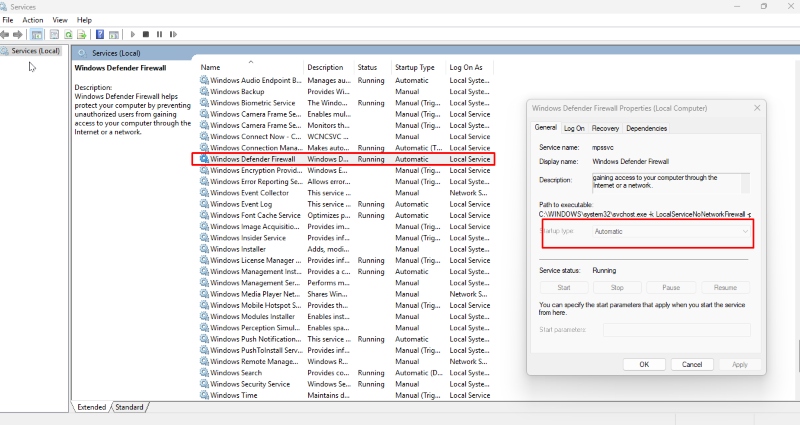
Defender trusts essential background services. If they don’t run, Defender will not start.
- Press Win + R, Type Services.MSC and HIT Enter.
- Find Windows Security Service And Windows Defender Antivirus Service.
- Right -click, select Featuresand set The start -up type Unpleasant Automatically.
- Click StartThan Apply > OK.
- Restart your PC and check if the defender works.
3. Perform Windows Problemplosser
The built -in problem solver can detect and solve problems, preventing the defender.
- Open Institutions (Win + I).
- Go to System> Solving problems> Other problem solvers.
- Scroll down Windows Security and click Run.
- Follow the instructions and apply proposed solutions.
4. Scan on damaged system files
If Windows system files are damaged, they can influence the functionality of Defender. Run the SFC (System File Checker) Scan To repair them:
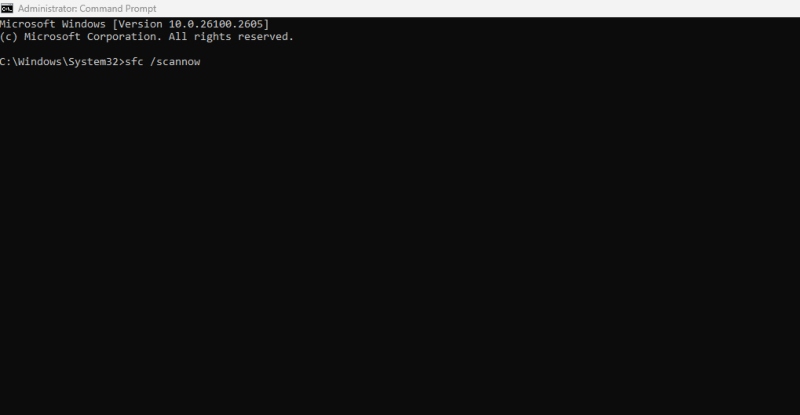

- Open Command prompt as manager.
- Type the next assignment and press Enter: SFC /Scannow
- Wait until the scan is complete and then restart your PC.
If SFC do not solve the problem, feed the Dismissal tools: Dism /Online /CleanUp-Image /RestoreHealth
This process repairs Windows system files and can restore the functionality of the defender.
5. Check group policy settings (for Windows Pro & Enterprise users)
Windows Defender can be eliminated through group policy. Here is how you can check:
- Press win + R, type gpedit.msc and press Enter.
- Navigate Computer configuration> Administrative templates> Windows -Components> Microsoft Defender Antivirus.
- Find Disable Microsoft Defender Antivirus.
- If it is Enableddouble -click it and set it up Not configured.
- Click Apply > OK And restart your PC.
6. Make sure that Windows is up-to-date
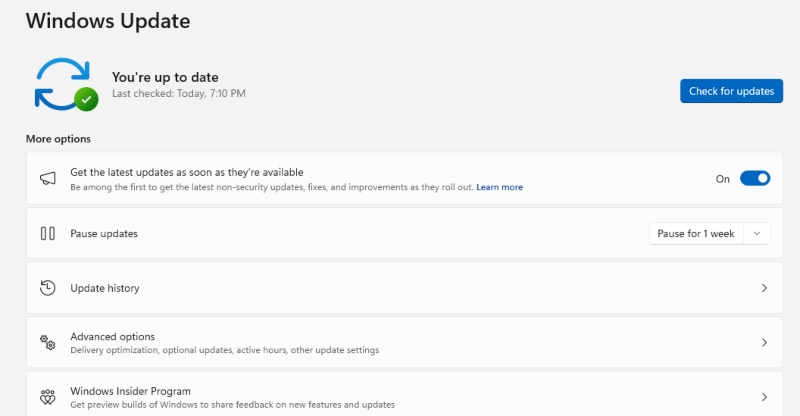

An outdated system can cause problems with Windows Defender. Update Windows to guarantee compatibility:
- Open Institutions (Win + I).
- Go to Windows -update.
- Click Check for updates.
- Install all available updates and restart your PC.
7. Perform a clean boot
A clean boot helps identify or interfere background applications with defender.
- Press win + R, type MsConfig and SLA Enter.
- Go to the Services Tab, check Hide all Microsoft servicesthen click Switch off everything.
- Switch to the Startup Tab and open Job management.
- Switch off all start -up programs and restart your PC.
Try to switch on the defender after restarting. If successful, you must switch on one by one to identify the perpetrator.
Do you only have to rely on Windows Defender?
Windows Defender is an excellent built -in security solution, but trusting a more extensive security suite is crucial with today’s developing cyber threats. People who are always online and do most of their work online are more sensitive to viruses, malware and cyber attacks. Would you feel comfortable if your computer is not thoroughly protected?
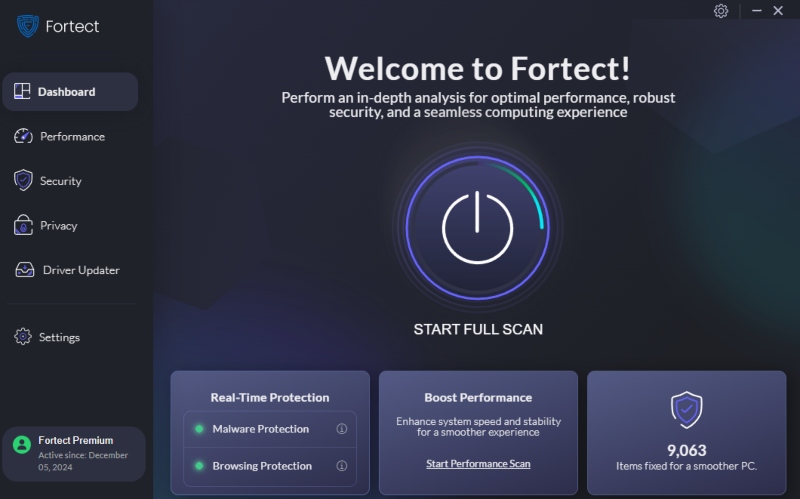

Fortress Offers an all-in-one PC repair and malware protection solution. It offers Real-time malware defenseScans automatically on threats and even repairs corrupted system files and outdated drivers to make your Windows system work smoothly.
Download Fortect for improved security and performance.
To better understand the difference between Windows Defender and external antivirus programs, Read our article, Microsoft Defender versus third parties Antivirus: what is better.
Conclusion
Windows Defender who does not engage can be frustrating, but the above solutions must help to restore functionality. Following these steps for solving problems can be re -run again, either by third -party software, damaged files or system settings. However, consider supplementing Windows Defender with Fortress To guarantee maximum protection against modern cyber threats.
